Jeep Cherokee Petrol 1984-2001 Gregorys Workshop Manual
|
Jeep Cherokee, Wagoneer & Comanche 4WD (Petrol) 1984 - 2001 Gregorys Owners Service & Repair Manual covers 4 and 6 cylinder petrol engine Jeep Cherokee, Wagoneer and Comanche. Does NOT include Grand Wagoneer or Diesel Engined variants. Engines covered: Transmissions described: Contents: NOTE: Only maintenance, adjustment, minor repair procedures plus removal and installation are described for the transmissions.
|
Both two- and four-door models associated with XJ Cherokee are provided throughout their lifetime, each creating exactly the same track and wheelbase measurements. Two-door models, but received much longer doors and front seating might fold forward to assist in rear traveler entry and exit. This is in addition to extended-length rear house windows that couldn't opened, although an optional back vent window ended up being on some systems.
a difference from the Cherokee from 1984 to 1990 was the Jeep Wagoneer. They certainly were not related to the similarly called full-sized Grand Wagoneer systems which had held the Wagoneer title before this point. The lightweight XJ Wagoneer is for sale in two trim amount: the "Wagoneer" and also the "Wagoneer brief". Both Wagoneers were distinguished from the Cherokee products in 1984 and 1985 by a slightly various grille and an inferior "Jeep" emblem offset towards motorist's part. Beginning in 1986, they altered to two vertically piled low and higher beam headights (a.k.a. "spider eyes") with front change indicators relocated behind the grille. The Wagoneer restricted included vinyl wood trim on sides and leather seating embossed with "restricted".
This variation was the first to become sold in European countries; it had been established in 1992 in some markets, 1993 the great britain. Early models have the 4.0-liter/242-cubic-inch inline six-cylinder engine best; the 2.5-liter (150 CID) system couldn't arrive in Europe until 1995. The XJ firewall had been notched to allow for the extended 4.0 L motor.
In mid-1985, a two-wheel-drive version of the Cherokee ended up being put into the lineup. This noted the very first time any Jeep product is offered with two-wheel drive since 1967, and is carried out in the hopes of attracting a few more purchasers just who didn't need (or desire to pay money for) four-wheel drive. Once the XJ Cherokee-based Comanche (MJ) vehicle was introduced, it was in addition for sale in two- and four-wheel drive. The brand new two-wheel-drive versions provided the leading suspension (from the track club, controls arms, basketball bones) with four-wheel-drive systems. Jeep simply put an individual axle pipe from hub to hub without any differential between, resulting in a cheap front side suspension system.
For 1996, partly to comply with newer U.S. OBD-II exhaust and evaporative emissions laws, the motor management program had been upgraded to Chrysler's then-new "JTEC" PCM. This included along side it advantages of enhancing dependability and easing diagnostics.
American engines's small XJ Cherokee was to be replaced by an innovative new and bigger model known as the ZJ (later on known as the Jeep Grand Cherokee whenever launched in 1993) that was under development by AMC. However, the smaller design's continuing popularity caused Chrysler executives to reconsider this choice, although the ZJ systems are launched in 1993, the XJ products had been retained until 2001. The Jeep XJ features stayed a favorite solution by off-roading enthusiasts due to its potent off-roading ability in stock kind. Their appeal has actually led to powerful ongoing aftermarket assistance in the shape of a multitude of merchandise.
The Jeep Cherokee (XJ) try a tight SUV which was produced and marketed by Jeep from 1984 to 2001. Revealing the name regarding the earliest full-size SJ model, but without a normal body-on-frame chassis, the XJ instead featured a light-weight unibody design, precursor to your modern-day recreation energy car (SUV).
The XJ produced competitors as more automakers started to observe that this Jeep design began replacing regular automobiles. It also started initially to supplant the part regarding the place truck and "transformed from vehicle to limousine inside vision of countless suburban people." The XJ is a "big connect when you look at the advancement of this 4x4."
Built in Toledo, Ohio, in Beijing, China, in Ferreyra, Argentina, in Cairo, Egypt, plus in Valencia, Venezuela, the XJ provided the mechanical foundation for the MJ-series Jeep Comanche pickup truck.
Noted automotive reporter Robert Cumberford, creating for vehicle, called the Jeep XJ among the 20 best automobiles of all time --- for its design, and "possibly the very best SUV shape of in history, it will be the paradigmatic design that other designers posses since aspired". The XJ was also chosen in 2011 as one of "10 vehicles that will not perish" by Kiplinger.
Design associated with the compact-size XJ Cherokee date back again to 1978 whenever a group of United states Motors (AMC) and Renault engineers drew a few sketches. Clay brands had been in line with the then latest full size SJ Cherokee. Early sketches of this XJ Cherokee have a European impact, & most associated with styling cues had been done by AMC designers in path of Richard A. Teague, vice-president of build.
Observing that General engines was creating a two-door S-10-based Blazer, AMC made a decision to develop an entirely brand-new four-door model along with a two-door version. American Motors' vice-president of manufacturing, Roy Lunn, created understanding referred to as "Quadra-Link" suspension, that restricted rollovers. Renault's Franois Castaing created the drivetrain making use of a much modest engine than normally found in 4WD vehicles and paid down the extra weight regarding the new-model. It "is noteworthy as earliest nonmilitary 4x4 with unibody construction." The unconventional build improved XJ's durability and off road capability that in the course of time won over more critics, also those products because of the very early underpowered GM engines. The XJ try described "since the very first smaller crossover SUV within the U.S.," with "plenty associated with the Jeep toughness (and a straight-six engine) built in." The style and market positioning associated with the XJ, combined with AMC Eagle really "foreshadowed the car-based crossover utility-vehicle trend."
Even though XJ versions have only been launched, AMC quickly began growth of its successor. To compete keenly against its much bigger competitors, the tiniest U.S. automaker produced a business procedure that is known as "product lifecycle control" (PLM) to accelerate its items development procedure. By 1985, developing and manufacturing was predicated on computer-aided build (CAD) applications techniques while brand new techniques stored all images and papers in a central databases. The pioneering PLM had been so effective that after Chrysler bought AMC in 1987, they broadened the system throughout a unique business.
British TV presenter and motoring specialist Quentin Willson explained the XJ Jeep as "a proper 4x4 symbol" and one of this "few really great automobiles... which, despite becoming left by new products, nevertheless provide fresh and urgent possibilities. Automobiles which be appropriate the old they have."
The 242 cu in (4 L) motor was developed by AMC in only 26 period utilizing numerous from the shelf components while featuring, amongst others, additional energy, enhanced burning chamber, port setup, and cam profile. The full total pounds of this newer system was 483 pounds (219.1 kg), only one lb a lot more than the 258 six despite their heavy components and section. For instance, the cast aluminum valve address showcased 15 bolts, a's more, to realize a confident seal.
This new motor, that has been launched in 1986 the 1987 model season, ended up being a further evolution of AMC's 258 six. They had a 3.875 in (98.4 mm) bore and a 3.414 in (86.7 mm) stroke providing they a displacement of 241.6 cu in (3,959 cc). Linking rod size had been 6.125" - similar to the stopped 199 that has been phased out in 1970.
The 4.0 is regarded as AMC's best-known engines. It was among four AMC machines held in production whenever Chrysler purchased AMC in 1987. Chrysler designers proceeded to improve the engine to cut back sounds, vibration, and harshness. The last into the distinct the AMC inline sixes, the 4.0 is certainly among the best Chrysler 4x4 off-road engines. A Motor Trend lasting test of a 1997 Cherokee XJ noted "this long-lived OHV powerplant has a reputation so you can get someone in which they need to go" and "much appreciate indicated by holders for torquey 4.0-liter/190-horsepower inline six." The system is known for longevity, and will sometimes go a lot more than 300,000 miles (482,803 km) without rebuilding. There are many aftermarket components readily available.
When introduced, the block-mounted oil filter check device was removed from the 4.0 (along with the 2.5 and 4.2s produced after September 1986) when AMC engineers standardised their oil filters. The pre-1987 motors had an oils filter adapter with 3/4 (cylinder block end) and 13/16 threads (which used a GM oil filter typical to Buick, Oldsmobile, Pontiac, and Cadillac V8 motors) while the 1987-06 machines had been originally installed with a 20 mm metric thread filter (later modified in 1991 when it comes to typical 3/4 threaded Mopar and Ford V8 oils filter; the oil filter adapter is redesigned in which the oils filter is put 90 degrees offset adjacent to the starter motor - a Ford V8 oil filter may be used in place of the brief filter increasing oiling capacity).
1st 4.0 engines in 1987 have a RENIX (Renault/Bendix) motor management system considered very advanced due to their time. A knock sensor allowed the ECU to regulate spark advance in reaction to gasoline octane and system burden. Unfortunately, there are few scan apparatus with the capacity of interfacing aided by the system to pull diagnostics codes. RENIX techniques supply no permanent memories for diagnostics rules thus making the diagnosis of intermittent problems more challenging.
The 1987 RENIX 4.0 made 173 hp (129 kW; 175 PS) and 220 lb*ft (300 N*m). In 1988, the 4.0 gotten greater streaming gas injectors, increasing result to 177 hp (132 kW; 179 PS) and 224 lb*ft (304 N*m)---more energy than some designs associated with Ford 302, Chevrolet 305, and Chrysler 318 8-cylinder motors, plus than just about any of the Japanese 6-cylinder vehicle motors, however with similar or better fuel economy.
In 1991, a Chrysler MPI gas injection system changed the RENIX program, while the intake ports had been lifted roughly .125 in (3.2 mm) for a significantly better entry radius. Chrysler in addition increased the throttle human body and redesigned the consumption and exhaust manifolds to get more efficiency, and fuel injectors were replaced with greater circulation models. Camshaft time has also been altered. The internet outcome is an engine that made 190 hp (142 kW; 193 PS) and 225 lb*ft (305 N*m). Badging of many Jeeps loaded with this engine study "4.0 Litre TALL OUTPUT." This new cam profile along with altered computer-programming eliminated the need for an EGR valve and hit sensor, but made the system most sensitive to changes, particularly in which emissions are worried. The OEM fuel injectors used in combination with the Mopar MPI system (manufactured by Siemens) happen known to leak gas specially with OBDII in which plugged catalytic converters are normal which generally throws a P0420 rule - one modification could be the using factory Bosch fuel injectors from a 1995/96 Dodge Neon that will supply faster speed and build additional horsepower.
Little changes are built to the cylinder mind the 1995 model year. In 1996, the system block had been redesigned for better energy. This new block have additional webbing and a stud girdle for additional rigidity of this crankshaft primary bearings. Machines set up in 1999 Grand Cherokees carried the "PowerTech" title that had been made use of intermittently in previous many years and on more Chrysler truck and SUV machines. The name is afterwards passed on to 4.0s within the more Jeep brands which used the engine, the Cherokee and Wrangler. The cylinder head had been once more changed for the 2000 model 12 months to an even more emissions-friendly design. This mind ended up being designated as "0331" within the casting quantity. Early 0331 heads are susceptible to breaking, causing coolant to contaminate the oils, which can cause catastrophic system failure. The head cracks within the center between no. 3 and #4 cylinders. The crack is generally discernible using the device address removed as a "milky" tan line. This problem is normally found before catastrophic system troubles, but can lead there if not corrected on time. The casting had been fixed in middle to belated 2001, although exact same casting number ended up being retained. The "fixed" heads has "TUPY" cast when you look at the center where in fact the splits familiar with take place. Additionally brand new the 2000 design 12 months, is the distributorless, coil on plug ignition system.
After 13 many years of manufacturing, 1997 saw the Cherokee obtain updated outside and interior styling. Both the two- and four-door bodies stayed in manufacturing, getting a steel liftgate (changing the fiberglass one made use of earlier), restyled taillights, additional synthetic molding along the doors, plus a brand new forward header panel that showcased even more aerodynamic styling. The spare tire had been relocated from a rear outside bumper mount to an inside venue due to de-contenting a corner bumper. A fresh, special extra tire service ended up being conceived by Peter Gruich while working for Jeep Unique software that utilized the trailer hitch bar and an original pivot bracket and although it absolutely was really the only external spare tire provider to pass the total Jeep durability test, it absolutely was maybe not supplied available.
The inner ended up being likewise up-to-date with an all-new build and instrument panel featuring the initial blow-molded shaped tool panel retainer structure. This tool panel showcased a distinctive cluster/airbag bracket created by Peter Gruich that let the interchange of this two equipment to ensure that the automobile become sold in the right-hand and left hand drive markets with both driver and passenger airbags. A stiffer unibody framework brought progress to noise, vibration, and harshness (NVH) measurements. Additionally causing NVH progress had been new door seals that paid down wind sound at higher rates.
In the 1999 design seasons, automobiles because of the 4.0 L motor received a revised intake manifold. It was finished to greatly help counteract small exhaust porting on most recent casting of cylinder heads, that has been complete to generally meet most strict emissions controls regulations. Both the four- and six-cylinder engines are provided through the 2000 model 12 months, though just the straight-six ended up being available in 2001. The 2000 and 2001 design many years, all six-cylinder XJs received a distributorless ignition program utilizing coil-on-plug ignition changing the "standard" system used; along with best exhaust porting and the more recent consumption manifolds, this offered a minor upsurge in power on the earlier designs. Transmission, axle, and transfer case options had been held over from previous products.
But major adjustment were underway with a new exec, Wolfgang Bernhard, who was simply known as a "cost-slasher" nicknamed "whirlwind", who came from Mercedes-Benz to show around Chrysler. "One of the first techniques Bernhard made as he stumbled on Chrysler in 2000 would be to let destroy the Jeep Cherokee, an aging, somewhat bland SUV." Thus, the (XJ) Cherokee range was replaced in 2002 by the Jeep Liberty (KJ), although it is retained the "Cherokee" nameplate in many foreign areas.
The Cherokee (XJ) remains a favorite car among off-roading enthusiasts. Their design has been mentioned among the biggest of all time. Desirable Mechanics listed the XJ as one of "the 25 biggest boxy vehicles ever".
When (XJ) Cherokee manufacturing finished in mid-2001, the portion of the Toledo Southern system Plant specialized in their production was torn-down.
Base - 1984--1992 / SE - 1993-2001 included: vinyl or cloth furniture, full-faced metal wheels, and AM broadcast with two speakers.
Wagoneer - 1984--1990 included: ribbed fabric furniture with leather-based trim, imitation maple-wood inside accents with lumber laminate exterior decals, alloy rims, AM/FM broadcast with cassette athlete and four speakers, infrared (single-button) remote keyless entry for 1990 model seasons, overhead console for 1990 model season, twin energy seats, and air-conditioning.
Briarwood - 1991--1992 (succeeded Wagoneer) included: leather-and-vinyl upholstery, faux maple-wood inside accents with lumber laminate outside decals, lace-spoke tires, AM/FM broadcast with cassette athlete and six Jensen AccuSound speakers, infrared (single-button) remote keyless entry, overhead gaming console, twin energy chairs, and an ac unit.
Pioneer - 1984--1990 included: cloth plaid-pattern furniture, metallic rims and was broadcast with two speakers.
Pioneer Olympic Edition - 1988 included: fabric furniture, AM/FM radio with two speakers, and an ac unit.
Chief - 1984--1990 included: cloth plaid-pattern upholstery, and AM/FM radio with two speakers.
Athletics - 1988--2001 included: cloth-and-vinyl upholstery, AM/FM radio with four speakers, full-faced metal or recommended alloy wheels, optional infrared (single-button) (1988-1996) or radio-frequency (dual-button) (1997-2001) keyless entry (if equipped with power locks), and an ac unit.
Country - 1993--1997 included: two-tone paint just like "Laredo" with upgraded color-keyed pinstripe in addition to option for "champagne" gold with silver as accent choices, the substitution of a few interior, formerly chrome accents with flat black (Base and athletics products, and, starting in 1993 design season), cloth-and-vinyl ("luggage fabric") upholstery utilizing the option for fabric (excluding 1993 design seasons), faux mahogany-wood internal accents, lace-spoke wheels, AM/FM broadcast with cassette athlete and four speakers because of the option for six Jensen AccuSound speakers, recommended overhead console (excluding 1993 design 12 months), infrared (dual-button) (1993-1996) or radio-frequency (dual-button) (1997) remote keyless entry (if designed with energy hair), recommended twin energy chairs, and an air conditioning equipment.
Classic - 1996, 1998--2001 included: monotone paint color, fabric upholstery, alloy wheels, AM/FM radio with cassette athlete and four speakers, infrared (dual-button) remote keyless entry, overhead system, and an air conditioner.
Limited - 1987-1992, 1998--2001 included: monotone paint, leather-and-vinyl upholstery, sunlight roof, color-keyed lace-spoke wheels, AM/FM radio with cassette athlete and six Jensen AccuSound speakers, infrared (single-button) isolated keyless entry, overhead console, dual energy seats, and an ac unit.
Laredo - 1985--1992 included: chrome accenting, fabric plaid-pattern (1985-1987) or "luggage fabric" (1988-1992) furniture with the alternative of "Briarwood" design leather-and-vinyl seats when it comes to 1992 model season just, five-spoke alloy wheels, AM/FM broadcast with four speakers as well as the choice for six Jensen AccuSound speakers, infrared (single-button) remote keyless entry (if designed with power locks) optional overhead system, optional double energy seats, and an ac.
Freedom - 2000 included: special badging, SE appearance group on recreation body, 16" Ultrastar alloy wheels(lent from the 1998 5.9L ZJ), AM/FM radio with cassette, radio-frequency remote keyless entry and an air conditioner. Based on the Sport trim levels. Available in 2wd or 4wd.
60th Anniversary - 2001 included: unique badges, unique floors mats, monotone paint color, 16" alloy rims, AM/FM radio with cassette, radio frequency remote keyless entry and an environment conditioner. On the basis of the athletics trim level.
1964-1970:
199 CID (3.3 L) - 6.125 in (155.6 mm)
232 CID (3.8 L) - 5.875 in (149.2 mm)
252 CID (4.1 L) - 5.875 in (149.2 mm)
1971--2006:
232 CID (3.8 L) - 6.125 in (155.6 mm)
242 CID (4.0 L) - 6.125 in (155.6 mm)
258 CID (4.2 L) - 5.875 in (149.2 mm)
282 CID (4.6 L) - 5.875 in (149.2 mm)
The displacement varies between 1990 and 1995 and 1996--2006 4.0L engines by 2 cubic inches. Both had a bore of 3.875 in (98.4 mm), as the stroke diminished slightly from 3.4375 ins (87.31 mm) on the earlier motor to 3.414 ins (86.72 mm) on 1996 and later engines. The displacement of both motors still rounds to 4.0 litres (3999.83 cc v. 3964.95 cc). The small stroke change (0.03"/0.77mm) was attained by moving the piston pin and altering the crankshaft swing, rods are identical.
The deck height of the AMC six-cylinder block had been enhanced by 0.125 ins (3.18 mm) (half the pole size difference) in 1971 to accommodate the extended swing necessary for the 258. Best two-deck levels. High deck are 9.528-9.534". Brief must be 9.278-9.284". Tall try from a 74-76 AMC factory services manuals, ahead of 1974 deck height had not been printed. Deck level altered slightly over time 1977-1982 solution guides condition 9.487-9.493", the 1993 Jeep factory manual shows 9.429-9.435". Deck heights may have altered to accommodate a little different compression ratios over the years.
The 1971 and older obstructs use a "little" bell housing bolt structure that's unique to AMC and little Nash sixes. In 1972 the bell housing bolt design is changed to match the AMC V8's - its best use was in 2006 whenever 4.0 had been phased out. Four bolts regarding cylinder block are coordinated on transmission bellhousing where an adapter plate acts both as a dust address - two further bolt holes from the transmission bellhousing applied to the AMC V8 are accustomed to secure the dust cover. The 1971 258 makes use of the "smaller" pattern, the sole 12 months 258 to do so.
Whilst intent behind car suspension will be allow the rims push vertically with respect to the human anatomy, its undesirable in order for them to move ahead and backwards (longitudinally), or laterally (laterally). The Panhard rod restricts horizontal motion. This is distinct from a traction bar, which manages axle place and suspension running. The track club or Panhard club is a simple device, composed of a rigid bar running sideways in the same airplane as axle, linking one end of axle into automobile body or chassis regarding opposing side of the car. The club attaches on either end with pivots that allow it to swivel up and downwards just, so that the axle can relocate the vertical airplane best. This doesn't effortlessly find the axle longitudinally, so it will be usually utilized in conjunction with trailing hands that support the axle in the longitudinal course. This arrangement is not typically combined with a leaf spring suspension, in which the springs on their own supply adequate horizontal rigidity, but only with coil springtime suspensions.
Manual transmissions
1984: Borg-Warner T-4 four-speed handbook, used in combination with 2.5 L I4 just, 21 spline result
1984--1987: Aisin-Warner AX4 four-speed manual, combined with 2.5 L I4 only, 21 spline result
1984: Borg-Warner T-5 five-speed handbook, used with 2.5 L I4 and 2.8 L V6, 21 spline production
1984--2000: Aisin-Warner AX5 five-speed guide, used in combination with 2.5 L I4, 2.1 L I4 diesel, and 2.8 L V6, 21 spline output
1987--Mid-1989: Peugeot BA-10/5 five-speed handbook combined with 4.0 L I6, 21 spline production
Late 1989--1999: Aisin-Warner AX15 five-speed guide, used with 2.5 L I4 diesel, 4.0 L I6, 23 spline output
2000--2001: unique endeavor equipment NV3550 five-speed guide, combined with 2.5 L I4 diesel, 4.0 L I6, 23 spline output
Automatic transmissions
1984--1986: Chrysler A904 three-speed automated, used in combination with 2.5 L I4 and 2.8 L V6
1987--2001: Aisin-Warner AW-4 four-speed automated, combined with 4.0 L I6
1994--2000: Chrysler 30RH three-speed automated, used in combination with 2.5 L I4
Transfer cases
Most of the transfer problems applied to the Cherokee are chain driven with aluminium housings. Command-Trac ended up being standard on XJ models built with 4WD.
1984--1987: unique techniques NP207 Command-Trac, part-time just, 2.61:1 ratio with reasonable number
1984--1986: unique techniques NP228/229 Selec-Trac, full- or part-time, 2.61:1 ratio with reasonable number
NP228/229 has vacuum pressure change for 2WD-4WD choice regarding the fly and an independent guide lever for reduced range
1987--2001: unique Process NP231 Command-Trac, part-time only, 2.72:1 ratio with low number
NP231 gets the after configurations: 2HI, 4HI, Letter, 4LO
1987--2001: unique techniques NP242 Selec-Trac, full time or part-time, 2.72:1 proportion with low number
NP242 gets the after setup: 2HI, 4 full-time, 4 part-time, N, 4LO
Axles
The Jeep XJ makes use of front and back solid (live) axles in place of separate front side and back axles. This setup enables the XJ to possess better off road ability and gratification at the cost of some on-road comfort and driveability. Mid-1985 and soon after two-wheel drive models used the same fundamental suspension system with a single tube connecting axle ends up without differential.
Front axle
1984--1996: Dana 30, large pinion, reverse cut, 27-spline axleshafts (1989 -- 1995 : with abdominal muscles made use of 5-297x universal joints, non-ABS have 5-260x universal bones. NP228/229 "Selec-Trac" equipped XJ designs had been also produced with constant-velocity bones in the place of universal joints.)
1996--1999: Dana 30, large pinion, reverse cut, 297x/760 universal joint, 27-spline axleshafts
2000--2001: Dana 30, low pinion, standard slice, 297x/760 universal joint, 27-spline axleshafts
1985--2001: right non-driven front side axle for two-wheel drive best
Rear axle
1984--1989: Dana 35, non c-clip, with anti-lock braking program (abdominal muscles) or non-ABS; dana 44 on some systems
1987--1991: Dana 44, systems w/tow package just, 30-spline axleshafts, non-ABS
1990--1996: Dana 35, c-clip, abdominal muscles or non-ABS
1997--2001: Dana 35, c-clip, ABS
1991--1996: Chrysler 8.25", c-clip, non-ABS, 27-spline axleshafts
Belated 1996--2001: Chrysler 8.25", c-clip, non-ABS, 29-spline axleshafts
Axle gear ratios
Jeep XJs came in many standard gearing ratios:
3.07:1, handbook transmission, I6 motor.
3.54:1, automatic transmission, I6 system with Dana 44 backside differential
3.54:1, manual transmission, I4 motor with Dana 35 back differential
3.55:1, automated transmission, I6, V6 motors; handbook transmission, I4 engine
3.73:1, automated transmission, I6, tow package, UpCountry package, 2.5 VM diesel guide
4.10:1, 2.5L I4 engine, V6 guide transmission
4.56:1, automatic transmission, I4, offroad or tow bundle
Suspension
The Jeep XJ makes use of a coil spring forward suspension system with a leaf spring rear suspension system.
Front suspension
The Quadra-Link front suspension system build locates the axle with four leading control arms to control longitudinal activity and rotation towards horizontal axis (drive and braking effect), two above the axle and two below it. A panhard rod, also called a track club, is employed to find the axle laterally. Two coil springs are seated on top of the axle housing including two gas-charged shock absorbers. The suspension used on automobiles aided by the optional UpCountry package provided one inch of carry on the standard suspension system. A-sway club was useful to minimize human anatomy roll in turns.
Rear suspension system
The XJ makes use of a leaf spring back suspension system. Each leaf pack includes four leaf springs with a set eyes at the front of the springtime and a compression-style shackle powering the springtime. Two gas-charged shock absorbers will also be made use of, along side a mild anti-sway/anti-roll bar. The suspension system applied to motors using optional UpCountry bundle didn't use the trunk anti-sway/anti-roll bar and supplied one inch of lift across standard suspension.
Jeep Cherokee Parts & Accessories, 2001, 2000, 1999, 1998 ...
Our wide inventory of auto parts is replenished daily, so we surely have your needed Jeep Cherokee parts. Get them here at low prices!
Jeep Cherokee Car Parts, Jeep Grand Cherokee Parts
Shop for Jeep Cherokee car parts at JCWhitney.com. Select from over 9,000 auto parts to help with auto repair on your Jeep Cherokee or Jeep Grand Cherokee. Jeep ...
Jeep Cherokee Parts and Accessories ... - amazon.com
In 1974, Jeep introduced a sporty two-door model based on the SJ platform used by the full-size Wagoneer SUV. (A four-door version would be added to the lineup three ...
Jeep Parts, Jeep Accessories for Wrangler, CJ, Cherokee ...
Online shopping for Jeep Parts & Accessories for Wrangler, CJ and Cherokee since 1990. Free Jeep accessories catalog available.
Find great deals on eBay for jeep cherokee parts jeep cherokee bumper. Shop with confidence.
Jeep Cherokee Parts, Jeep Cherokee Accessories ... - Quadratec
Quadratec specializes in Cherokee Parts and Accessories for Jeep Cherokee, Jeep Grand Cherokee and Jeep Wrangler. Be sure to check out our selection of Jeep Cherokee ...
Jeep Cherokee Parts & Accessories|XJ Parts 84-01|Morris ...
Get free shipping on Jeep Cherokee XJ parts and accessories at Morris 4x4 Center. Guaranteed lowest price on parts for your Cherokee.
Jeep Cherokee Parts | Replacement, Maintenance, Repair ...
Don’t waste your time hunting all over for parts for your Jeep Cherokee. Whether it’s for scheduled maintenance or a repair job, we have what you need.
Jeep Cherokee Haynes Owners Service, Workshop and Repair Manual 1984 - 2001 1985 1986 1987 1988 1989 1990 1991 1992 1993 1994 1995 1996 1997 1998 1999 2000

 0 Items (Empty)
0 Items (Empty)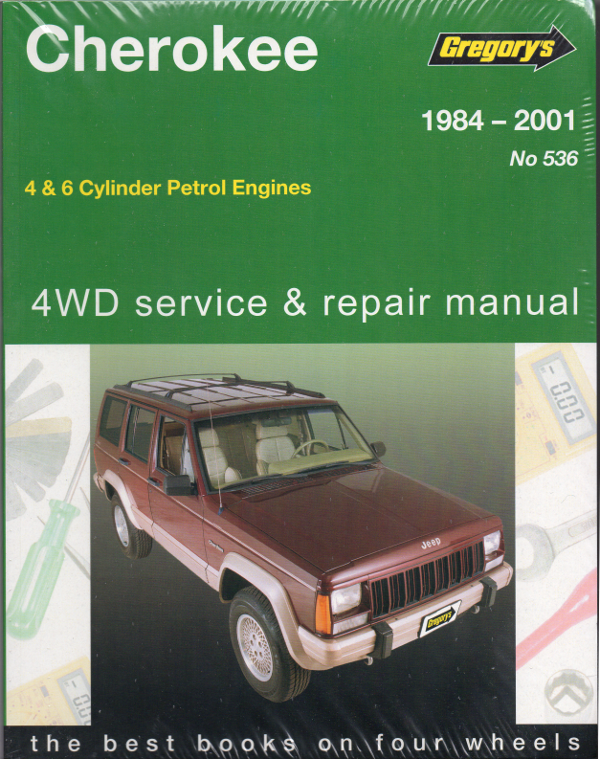


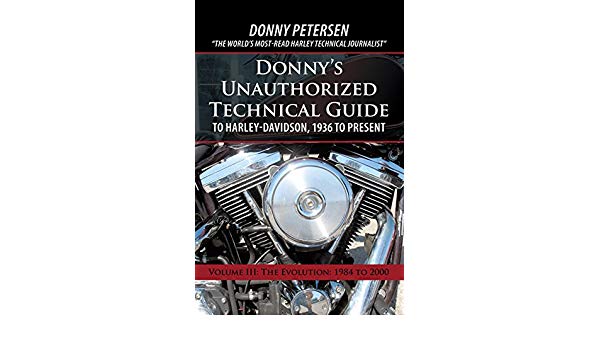
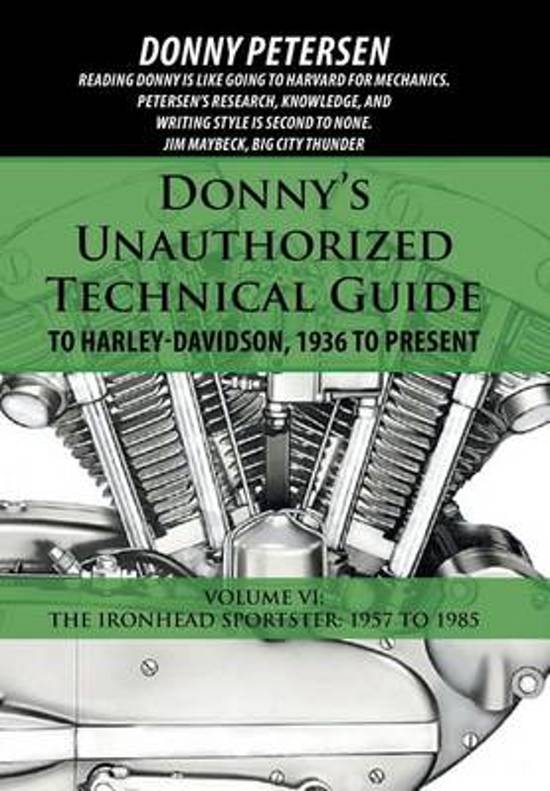
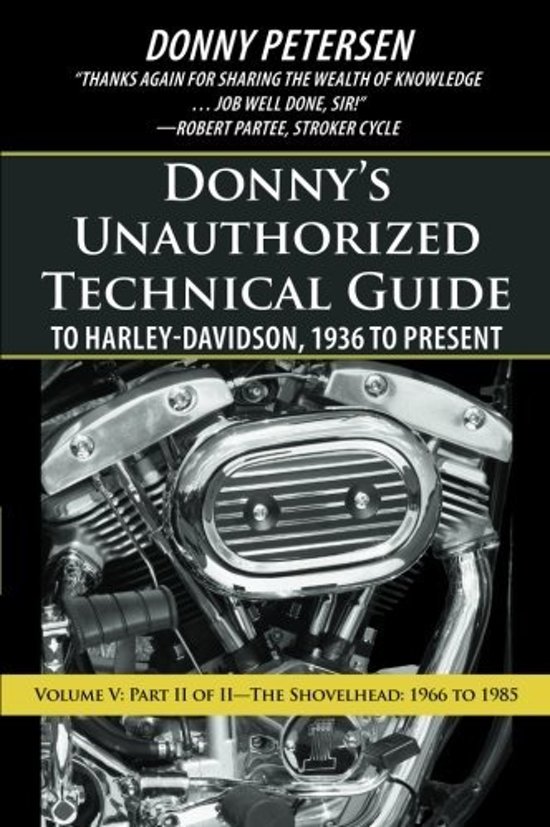
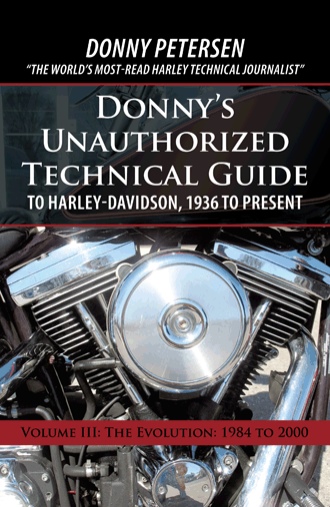
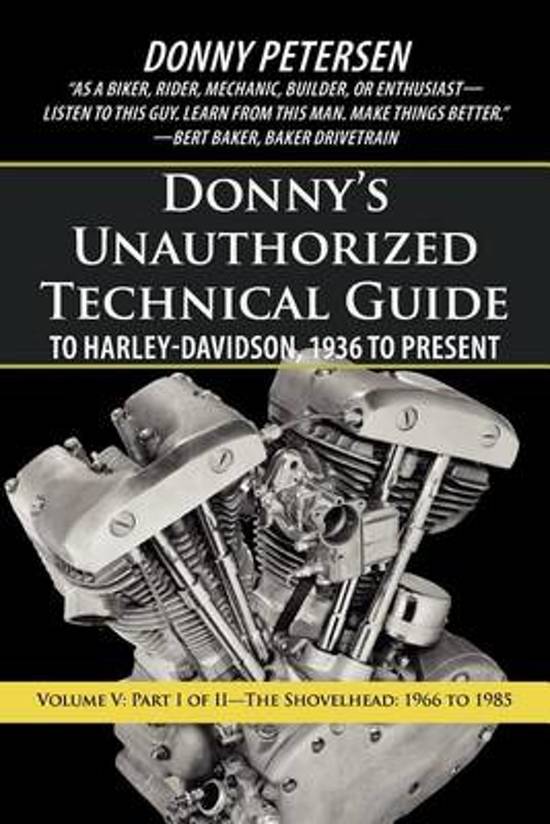
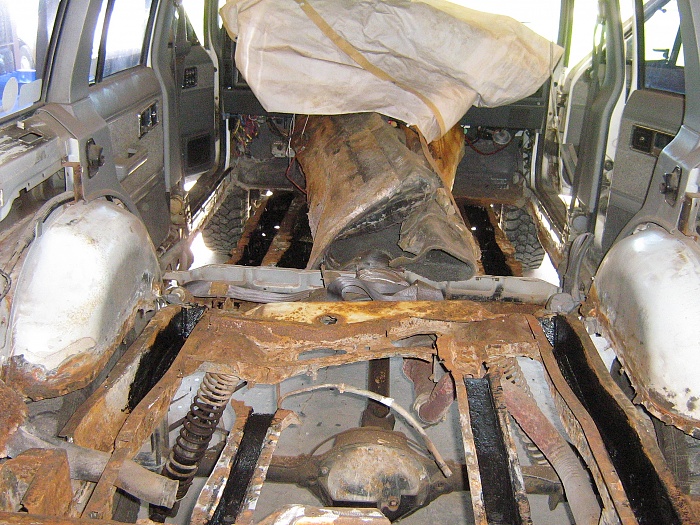
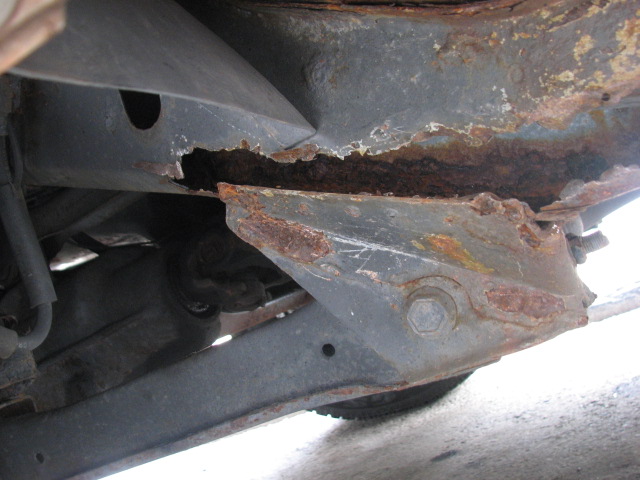
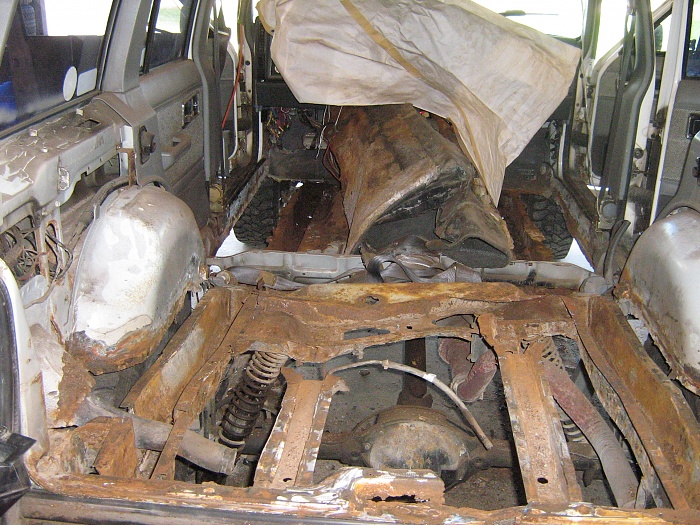
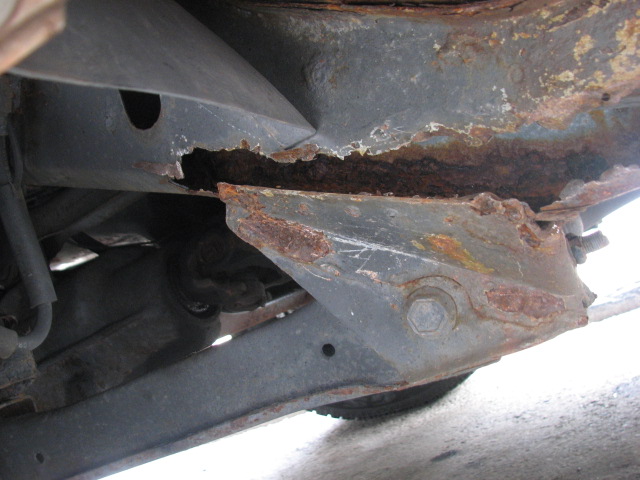
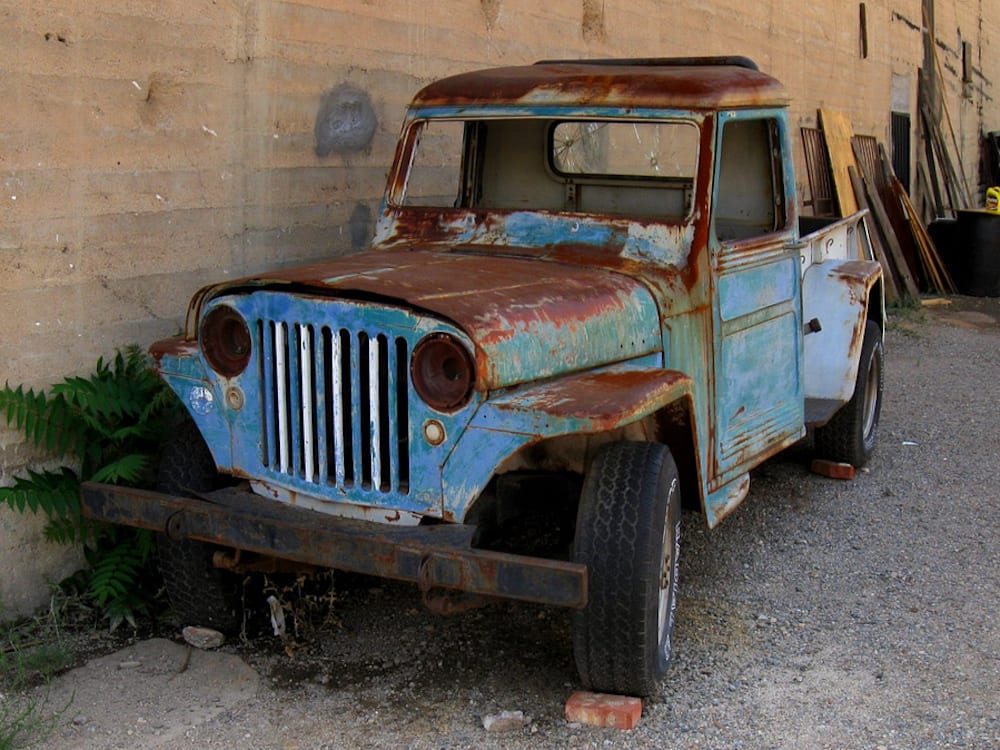
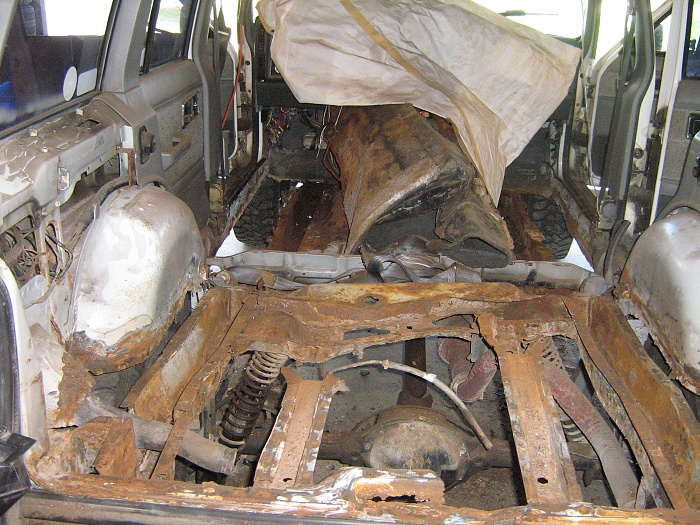
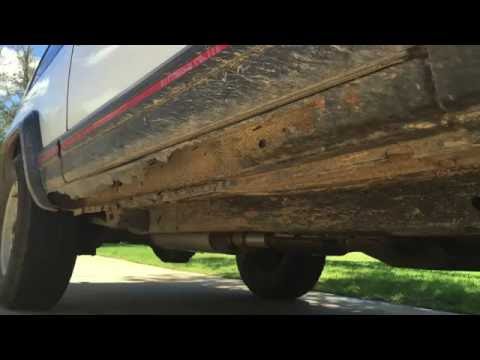
 >
>